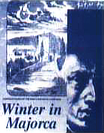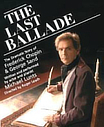George Sand and Frederick Chopin
The figure of George Sand looms large over Chopin's later life. She is as controversial a figure to Chopin lovers today as she was in his lifetime. Was she his vampire or his guardian angel?
There is so much conjecture about who did what to whom in the dramatic story of their break-up that blame is almost impossible to apportion.
Solange, Sand's daughter, undoubtedly stirred up a hornets' nest with her poisonous tongue, but she was a product of an overprotective mother who she felt never loved her. "She spoiled me without loving me. I didn't need a horse or fancy clothes, I needed affection", she claimed after Chopin's death. Indeed, Chopin was one of the few people who always stood by Sand's daughter, and he paid a terrible price for his loyalty. Maurice, Sand's son, grew increasingly resentful of Chopin's influence on his mother and, by then an adult himself, saw Chopin as a rival rather than a fatherly friend in these last years. Then there was poor Augustine Brault. Brought into the family by Sand as a 'sister' for Solange, she ended up as everyone's scapegoat, the catalyst for all those simmering family resentments that boiled over during the dramatic summer of 1847.

Sand's biographers often see Chopin as a millstone around the neck of an extraordinary and diversely-talented woman. Chopin's biographers are more likely to depict Sand as responsible, in some way at least, for the early death of the composer by relinquishing her care for him in his last years. This is also, of course, a tacit admission that we have her to thank for keeping him alive for so long and well enough to compose. As she had discovered early on in their relationship, on a trip to Majorca in 1838, Chopin was peculiarly vulnerable to illness, his constitution undermined by tuberculosis. He might well have been carried off before the 39 years allotted to him had Sand not taken him into her care at Nohant and in Paris. She gave him the right conditions in which to compose.
Like her or loathe her, Sand was a remarkable woman - a prodigious novelist, dramatist and campaigner for all manner of political reform. 'The first modern liberated woman', to quote Noel Gerson, one of her biographers. She successfully divorced her husband and kept control of her children at a time when such a course of action by a woman was almost unheard of. As any George Sand biography shows, Chopin was only one of many famous men in her life, but for Chopin, Sand was the love of his life - lover, mother, nurse, companion and muse. After the relationship fell apart, in 1847, he scarcely put pen to manuscript paper again, before his death two years later.

Sand was conspicuous by her absence at Chopin's death in Paris on 17th October 1849. Holding his hand instead was Sand's estranged daughter, Solange, she who had played, along with her husband - the sculptor, Auguste Clesinger - such a pivotal part in ending her mother's relationship. In an ironic twist of fate, the task of making Chopin's death mask and a cast of the composer's hand fell to Clesinger, thus ensuring the sculptor's place in history when his other work is little known today.
Chopin never stopped loving George Sand. Amongst his belongings, found after his death, was a small envelope inserted into the back of his diary. It was embroidered with the initials 'G.F' ('George/Frederick') and contained a lock of her hair.
Michael Lunts
